12 fitness Lifestyle peanut butter ideas
PBFit Peanut Butter
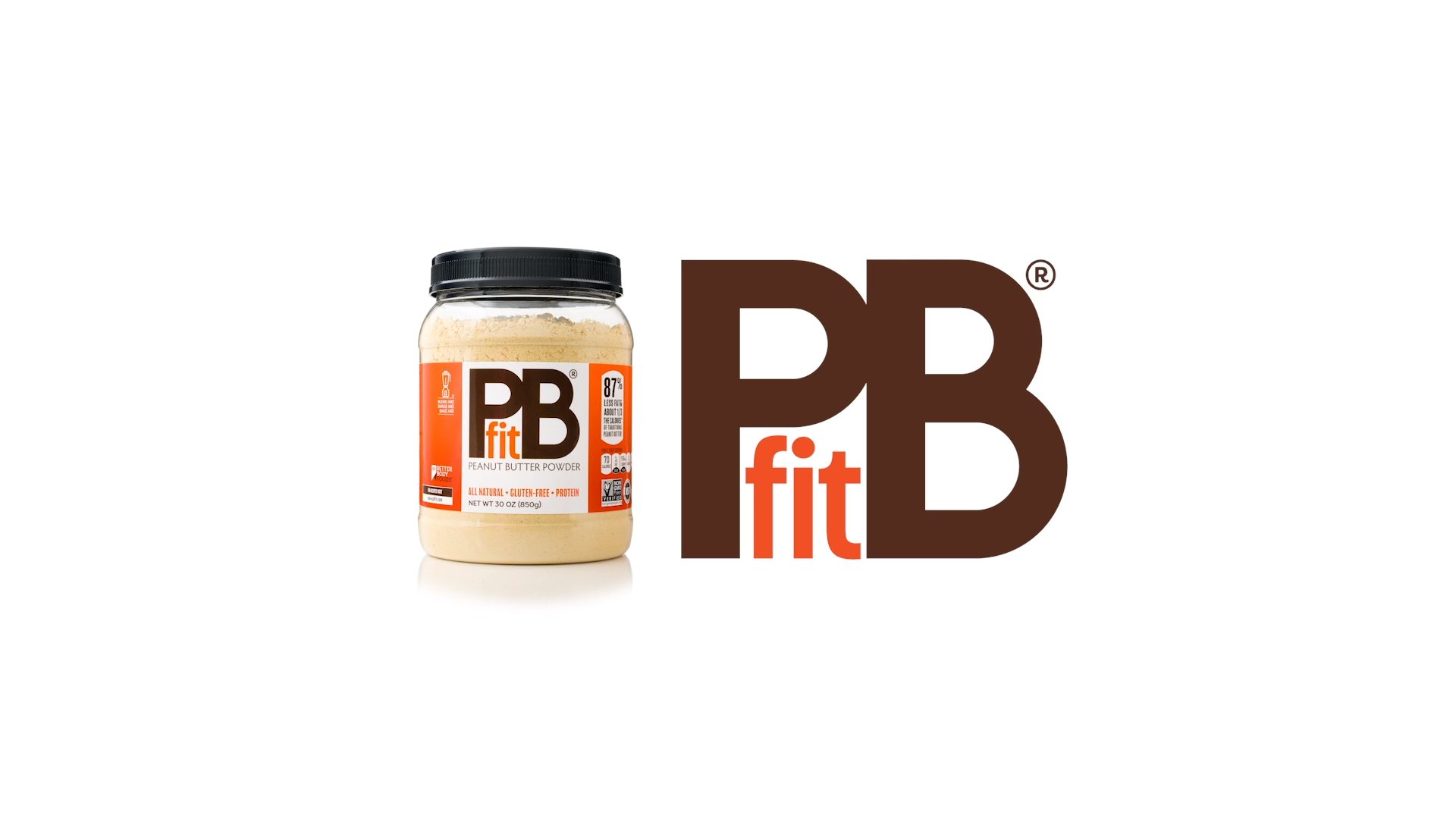
via: www.pbfit.com
PBfit is a natural peanut butter powder with 87% less fat and about 1/3 the calories of traditional peanut butter. Because it is a powder, it is easier to use in smoothies, baking, and shakes of all kinds!
Keto Peanut Butter Chocolate Chip Bars
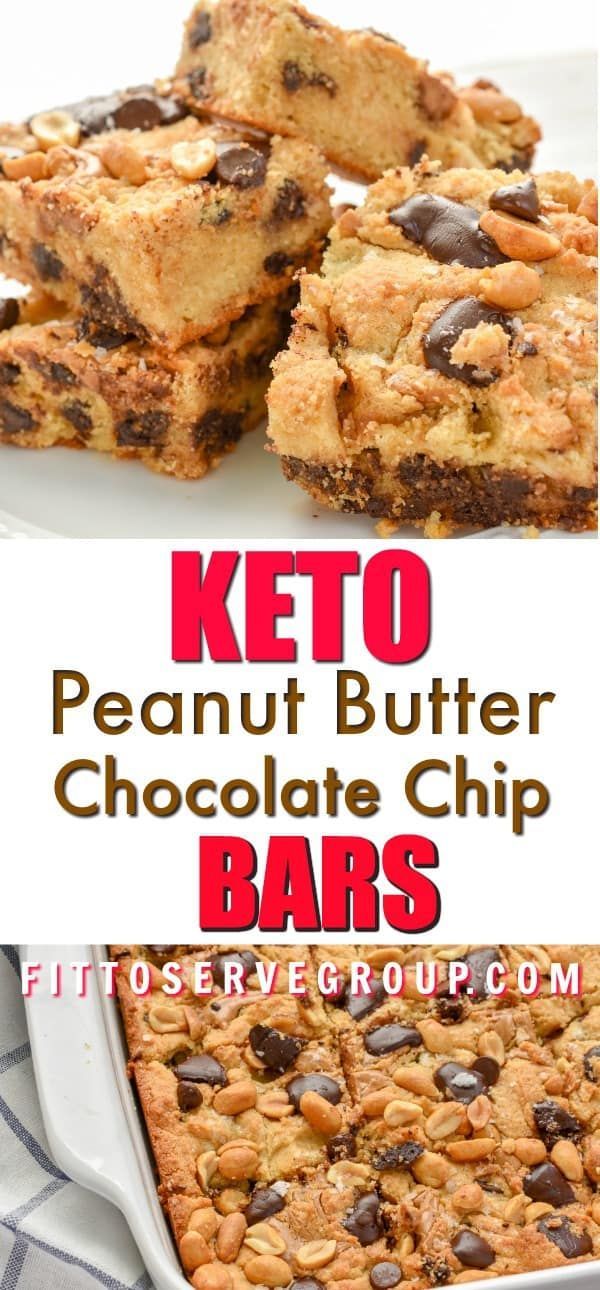
These Keto Peanut Butter Chocolate Chip Bars are loaded with peanut butter and chocolate goodness. Thick and oozing with peanut butter and melty sugar-free chocolate chips makes these the perfect little low carb treat. Â #ketopeanutbutterchocolatechipbars #ketocookiebars #lowcarbcookiebars
Is Peanut Butter ?eto? Expert Answers and Alternatives
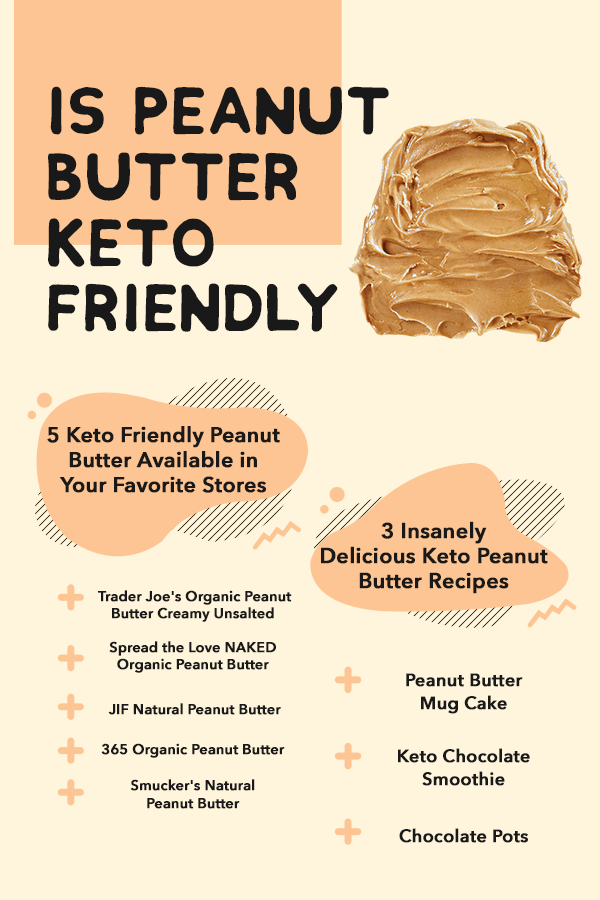
via: www.kissmyketo.com
A fairly common question first-time ketoers ask is whether peanut butter is keto-friendly. The short answer is yes, peanut butter is keto-friendly. The long answer is – it depends on the type and brand. Continue reading to learn more about eating peanut butter on a keto diet. #KissMyKeto #Keto #KetoLifestyle #LowCarb #KetoNutrition #Ketotips #KetoInfographics #PenutButter A fairly common question first-time ketoers ask is whether peanut butter is keto-friendly. The short answer is yes, peanut butter is keto-friendly. The long answer is – it depends on the type and brand. Some peanut butters have added sugar and some even have partially hydrogenated vegetable oils – both forbidden on keto. Others are sugar-free and made mostly of peanuts. It’s easy to see why you will need to be careful when choosing peanut butter for your keto diet. Continue reading to learn more about eating peanut butter on a keto diet. We will also talk about some peanut butter alternatives, which peanut butter brands are best for keto, and what recipes you should try. Is Peanut Butter Keto-Friendly? Peanut butter is definitely keto-friendly. Like most nut butters, peanut butter is high in fat, low in carbs, and moderate in protein. A 20-gram serving size of natural peanut butter has the following macros (according to MyFitnessPal.com): Carbs: 3g (10%) Fat: 10g (74%) Protein: 5g (16%) The confusion around peanut butter on a keto diet stems mainly from two facts: Peanuts are classified as legumes, and legumes are typically avoided on keto Peanut butter often has added sugar However, these features don’t really make peanut butter any less keto-friendly. First, despite being a legume, peanuts are classified as nuts because their nutrient composition resembles that of tree nuts. Second, there are many peanut butters with no added sugar or sugar substitutes. Carbs in peanut butter & other nutritional information Only 10% of the calories in natural peanut butter come from net carbs, so you’ll get around 3g net carbs per 2 tablespoons [1]. Peanut butters with sugar will give you 4.5g net carbs for the same serving size. Besides being low in carbs, peanut butter is high in fat and moderate in protein — perfect on a keto diet. A 2-tablespoon serving will give you a generous 16g of fat and 8g of protein. Other than that, peanut butter is a good source of vitamin E, B vitamins, magnesium, phosphorous, and copper. Nutritional Info – Natural Peanut Butter Nutrition Facts Serving size: 2 tbsp (32g) Calories 200 kcal Fat 16g Protein 8g Total carbs 5g Net carbs 3g Fiber 2g VITAMINS Vitamin E 3mg Niacin 4.3mg Vitamin B6 0.2mg Folate 24mg MINERALS Magnesium 50mg Phosphorus 115mg Copper 0.2mg Manganese 0.5mg Quick and easy better alternatives for low carb peanut butter Not everyone loves peanut butter, and some people are even allergic to peanuts. Luckily, there are plenty of alternatives, some even nut-free. Check out these 4 popular substitutes for peanut butter in your keto diet: Almond butter Almond butter is a popular nut butter on keto. It is a natural nut butter with the same amount of net carbs as peanut butter [2]. A major advantage of almond butter is that it’s lower in omega-6 fatty acids than peanut butter, and excess intake of omega-6 fats has been linked to obesity and other health problems [3]. Tahini Also known as sesame seed paste, tahini is another excellent source of protein and healthy fats. Keep in mind that tahini is on the runny side and it tends to be rather bitter on its own. However, added to dips, toasts, and smoothies, it makes everything taste better and much healthier. Sunflower seed butter In terms of flavor and texture, this seed butter is the closest you’ll get to peanut butter. You can easily find it at most grocery stores and even make your own in a food processor. Coconut butter Coconut butter is a paste made from shredded coconut. It has an intense coconut-y flavor and is incredibly creamy. It’s also rich in medium-chain triglycerides (MCTs). How much peanut butter can I have on keto? The keto diet typically limits net carbs to fewer than 50g daily. To eat within this daily carb limit, most of your meals should have fewer than 15 net carbs. A typical serving of natural peanut butter (2 tablespoons) provides around 3g net carbs. So, even if you double your intake, you’ll still likely stay within your daily carb limit. At the end of the day, how much peanut butter you can have on keto depends on whether it fits your macros. Make sure to count the carbs and other macros from peanut butter into your daily meal plan. 5 Keto-Friendly Peanut Butter Available in Your Favorite Stores Not all peanut butters are keto-friendly. To help you make the best choice of peanut butter for your keto diet, here is a short list of the best products you should be able to find at your favorite stores. 1. Trader Joe’s Organic Peanut Butter (Creamy Unsalted) A creamy organic peanut butter made with nothing but peanuts. Unlike most other natural peanut butters, the oil does not separate, and the peanut butter tastes delicious. Buy it now on Amazon or at your local store. 2. Spread the Love NAKED Organic Peanut Butter Made in California with dry-roasted organic peanuts, this peanut butter is also sugar-free. Buy now on Amazon or on the Spread the Love Foods website. 3. JIF Natural Peanut Butter If you’re a fan of JIF peanut butter, their natural sugar-free peanut butter is for you. It’s also cheaper than many other natural peanut butters at $2.50 for a 16-oz. jar. Visit the JIF official website to find a store, or shop online. 4. 365 Organic Peanut Butter This brand (found at Whole Foods) of peanut butter is always good. Choose between creamy or crunchy for just $3.99 per 16-oz jar. Buy at Whole Foods stores. 5. Smucker’s Natural Peanut Butter A 100% natural peanut butter made with two simple ingredients: fresh-roasted peanuts and a dash of salt. Visit Smucker’s website to find a store near you, or buy online. 3 Insanely Delicious Keto Peanut Butter Recipes Peanut butter isn’t just for smoothies and peanut butter and jelly sandwiches. Try out these 3 delicious keto-friendly recipes with peanut butter. 1. Peanut Butter Mug Cake You only need 3 ingredients and 5 minutes of your time to make this peanut-y mug cake. The recipe yields one serving, which provides almost 300 calories, most coming from fat. You’ll also get 14g of protein in a single serving – perfect if you need a pre or post-workout snack. Get the recipe here. 2. Keto Chocolate Smoothie This chocolate smoothie calls for almond butter, but you can use peanut butter instead and it will taste just as good. Peanut butter adds protein and improves the texture of keto smoothies. Make this smoothie whenever you need a quick breakfast for on the go or something to curb your mid-day slumps. Get the recipe here. 3. Chocolate Pots Another quick dessert option is this chocolate pots recipe. Made with our peanut butter flavored Keto Bar, it makes for a lovely dessert you can serve friends and family. Get the recipe here. Conclusion Peanut butter is one of those foods that keto dieters frequently seem to question. There are many reasons why this may be the case, but rest assured that peanut butter can be keto-friendly if you go for the natural and sugar-free versions. Alternatively, you can always substitute peanut butter for other nut and seed butters. If you choose to eat peanut butter on your keto diet, go for quality brands that sell natural peanut butter and feel free to use it in your desserts and other recipes. Takeaways Peanut butter is keto-friendly as long as it’s free from sugar and partially hydrogenated oils. You can substitute peanut butter for almond butter, tahini, coconut butter, and other similar products. Keto dieters can have two or more servings of natural peanut butter on a keto diet and still be within their daily carb limits. Peanut butter is a great way to incorporate fats and protein into smoothies, keto desserts, and other recipes. References: USDA. Full Report (All Nutrients): 45113051, HAMPTON FARMS, NATURAL PEANUT BUTTER, UPC: 081864002560. 2018 July – https://ndb.nal.usda.gov/ndb/foods/show/45113051 USDA. Full Report (All Nutrients): 45123320, ALMOND BUTTER, UPC: 840379100013. 2018 July – https://ndb.nal.usda.gov/ndb/foods/show/45123320 Simopoulos AP. An Increase in the Omega-6/Omega-3 Fatty Acid Ratio Increases the Risk for Obesity. 2016 March 2 – https://www.ncbi.nlm.nih.gov/pmc/articles/PMC4808858/
Advertisment
SUPER POPULAR Keto Cookie Recipe with rave reviews!
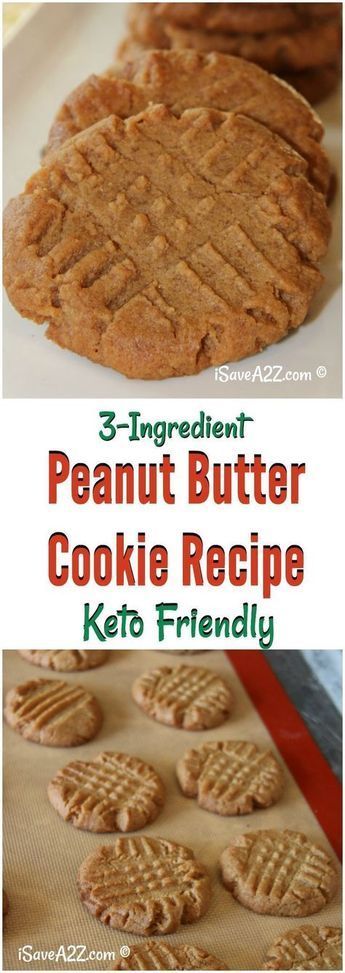
via: www.isavea2z.com
Keto Peanut Butter Cookies: Only 3 ingredients with 20 minutes of your time and you have one heck of a dessert! #keto #christmascookies #desserts Only 3 ingredients with 20 minutes of your time and you have one heck of a dessert!
KETO PEANUT BUTTER COOKIES!
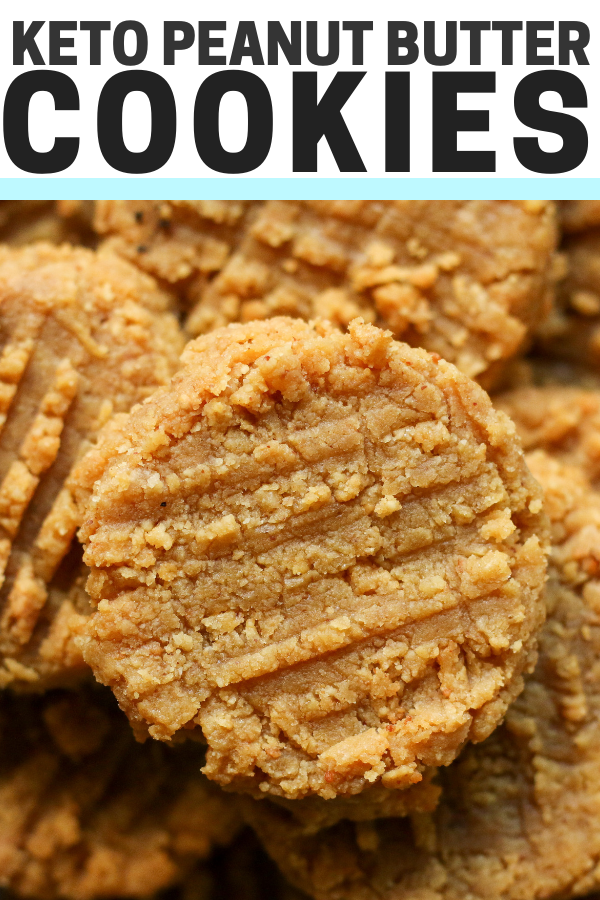
via: www.thedietchefs.com
THE BEST low carb keto peanut butter cookie recipe! They’re so easy to make, honestly, they’re almost as easy as the classic 3 ingredient peanut butter cookie recipe. And just like those cookies, these keto peanut butter cookies are made with just a few ingredients like almond flour, and swerve. The BEST Keto Peanut Butter Cookie Recipe! These are low carb, no sugar, flourless peanut butter cookies for the keto diet. They’re made with just almond flour, Swerve, and eggs, and are incredibly soft + chewy. Plus, these keto peanut butter cookies are so easy to make. From start-to-finish, they only take 15 minutes!
Post Workout Protein Balls & Energy Bites – No Bake, Easy To Make! – Fitter Past Forty
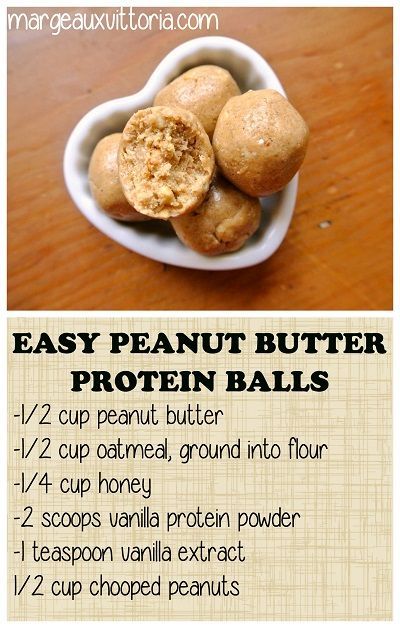
Easy Peanut Butter Protein Balls, gluten free, no bake and no refined sugar. After a workout your body needs to refuel. It needs carbs to replenish its energy resources and protein to repair the minuscule tears that any workout causes in your muscle fibers. Protein balls are a great and simple post workout snack that provide your body with all the nutrients it needs to recover. Of course, … Read more Post Workout Protein Balls & Energy Bites – No Bake, Easy To Make!
Advertisment
Healthy Chocolate Peanut Butter Low Carb Smoothie Recipe
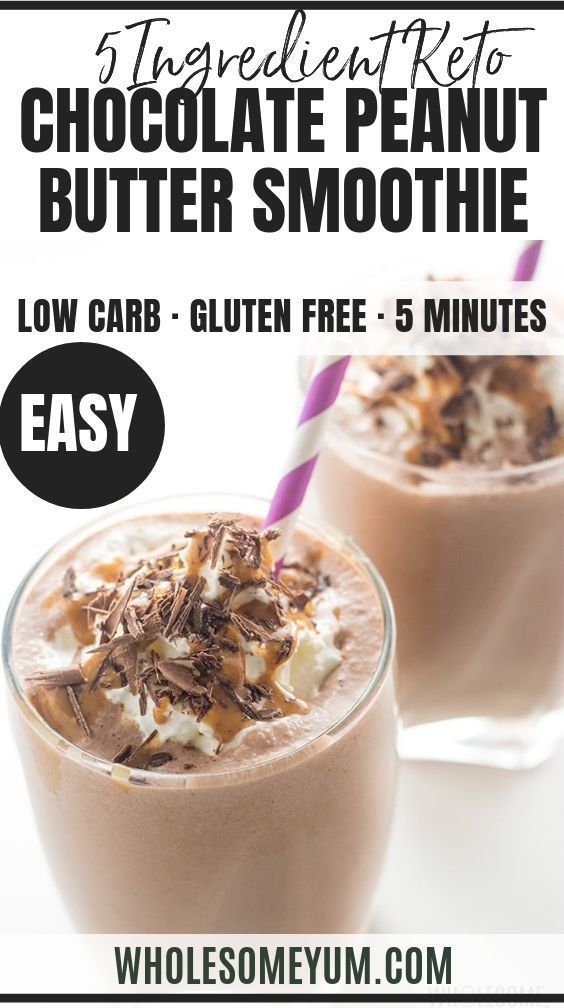
via: www.wholesomeyum.com
Healthy Chocolate Peanut Butter Low Carb Smoothie Recipe – This keto chocolate peanut butter smoothie recipe will be one of your fave healthy low carb smoothies. So creamy, and ready in 5 minutes with 5 ingredients! #wholesomeyum #keto #lowcarb #breakfast #dessert #snack #lowcarbrecipe #ketorecipe After a workout your body needs to refuel. It needs carbs to replenish its energy resources and protein to repair the minuscule tears that any workout causes in your muscle fibers. Protein balls are a great and simple post workout snack that provide your body with all the nutrients it needs to recover. Of course, … Read more Post Workout Protein Balls & Energy Bites – No Bake, Easy To Make!
Peanut Butter Fat Bomb: Delicous and Keto / Low Carb Friendly
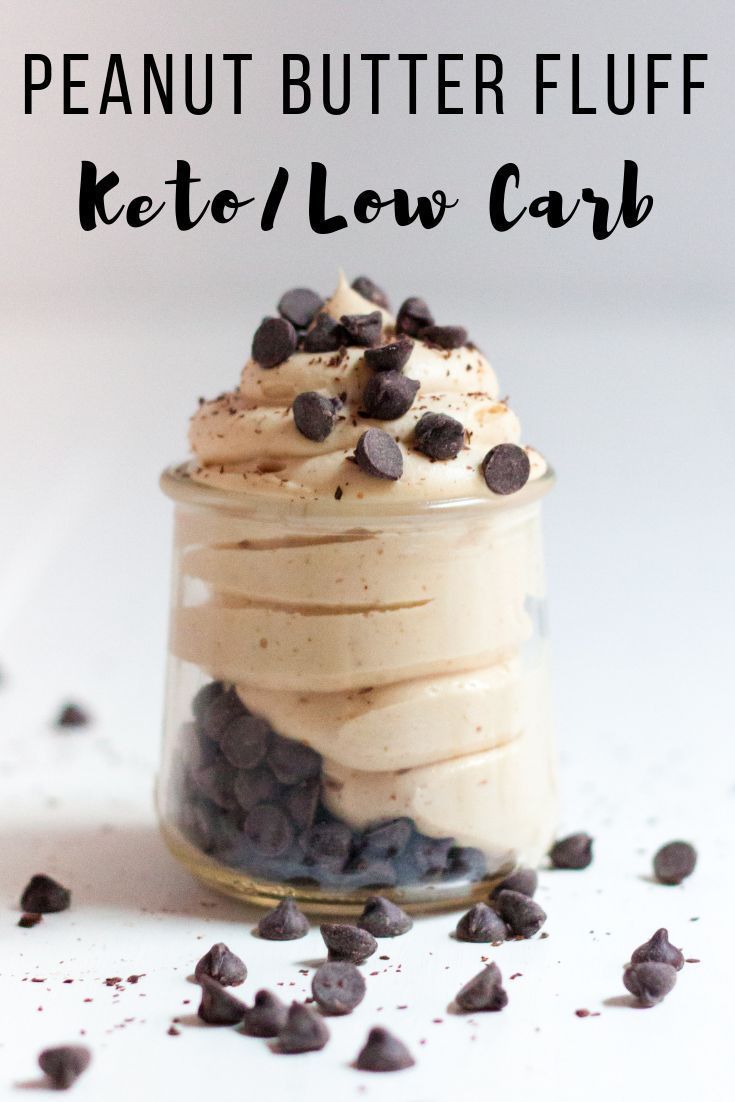
via: kaseytrenum.com
This delicious Peanut Butter Fat Bomb recipe will make you forget you are eating keto. It’s one of the very best Fat Bombs I’ve ever eaten. #keto #lowcarb This delicious Peanut Butter Fat Bomb recipe will make you forget you are eating keto. It’s one of the very best Fat Bombs I’ve ever eaten.
Peanut Butter and Chocolate Overnight “Oats” { Low Carb | Keto | GF }
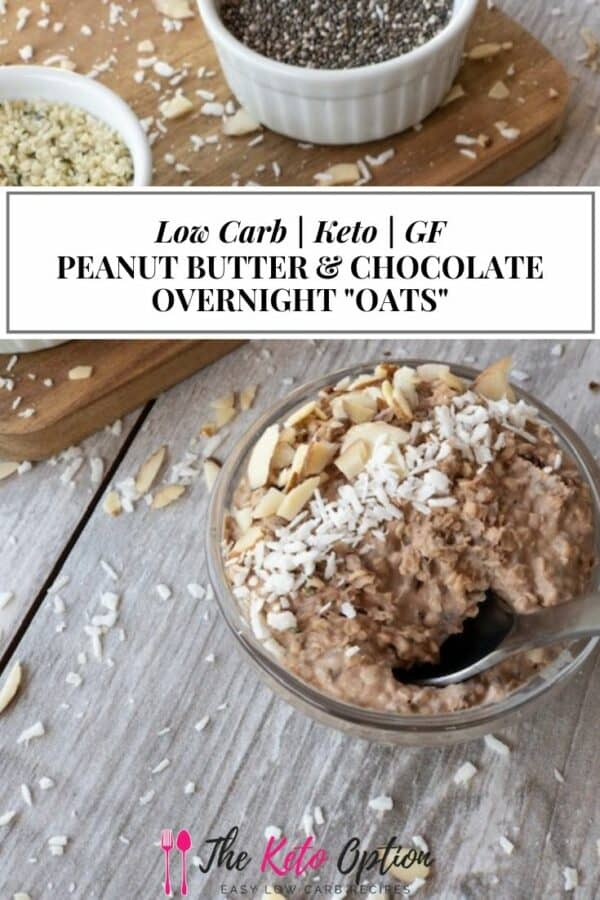
via: trinakrug.com
Peanut Butter and Chocolate Overnight “Oats” { Low Carb | Keto | GF } | The Keto Option – Keto The Healthy Way These yummy Peanut Butter and Chocolate Overnight “Oats” are the perfect breakfast to start your day right! Packed full of healthy fats, fiber, and tastiness!
Advertisment
Shake and Go Peanut Butter Banana Overnight Oats
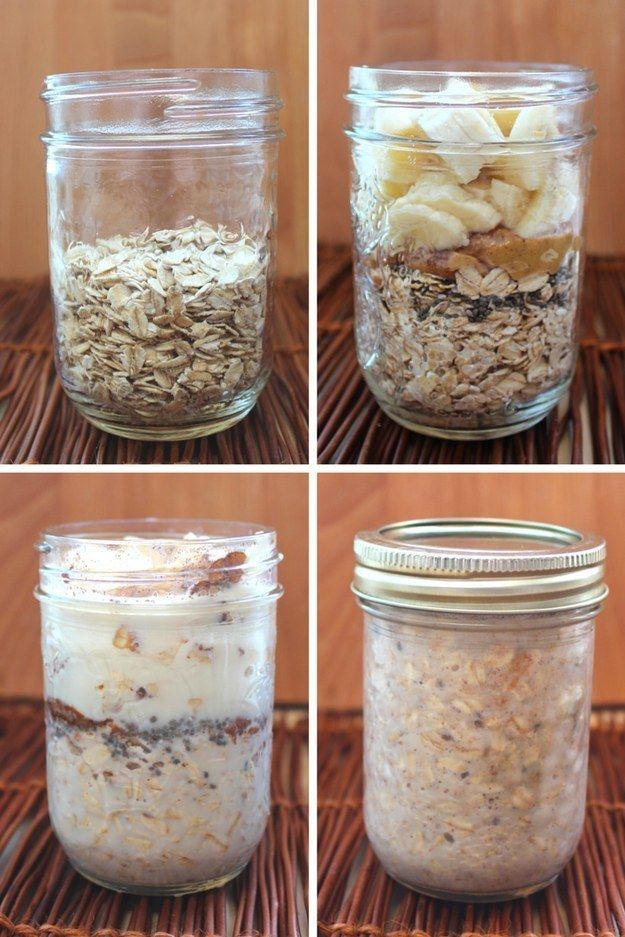
via: www.buzzfeed.com
Shake and Go Peanut Butter Banana Overnight Oats | Community Post: 14 Vegan Overnight Oats Recipes That Will Make You The Queen Of Mornings Recipe here.
20 Healthy PB2 Recipes For Peanut Butter Lovers
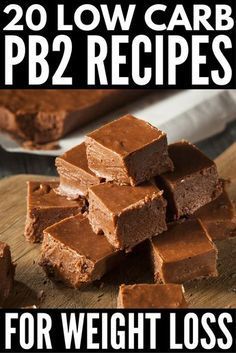
via: www.merakilane.com
If you’re a lover of all things peanut butter, but don’t like what it does to your bum, hips, and thighs, this collection of the best PB2 recipes is for you! Whether you’re on the Weight Watchers diet, follow a low carb lifestyle, or just want healthy options to get your peanut butter on, these recipes will not disappoint. From protein-rich breakfast smoothies to guilt-free cookies, there’s a recipe here for everyone! #PB2recipes #PB2 #PB2desserts #lowcarbdiet #lowcarbrecipes From Shrimp Pad Thai to Flourless Chocolate Brownies, this collection of healthy PB2 recipes is a peanut butter lover’s dream come true!
Protein Calculator

via: hosanna.store
This protein calculator is an excellent tool for anyone who is interested in living a healthy lifestyle and eating a balanced diet. With its help, you’ll be able to calculate the optimal protein intake for your weight and activity level. Protein Calculator This protein calculator is an excellent tool for anyone who is interested in living a healthy lifestyle and eating a balanced diet. With its help, you’ll be able to calculate the optimal protein intake for your weight and activity level. What are proteins? – protein definition Proteins, just like carbohydrates and fats, are macronutrients – substances used by organisms to produce energy and sustain basic bodily functions. Being organisms, proteins are essential to our existence; Different types of proteins not only build our muscles, but also regulate our hormones and metabolism. Some of them are antibodies – without proteins, our immune system wouldn’t work at all. There is also another group of proteins, albumins. These globular proteins are found in our blood, and travel through the blood vessels of our body. Albumins serve many roles. They transport various substances that need to get to every part of our body: cations (Na?, K?, Ca??, Mg??), fatty acids, bilirubin, hormones (including thyroxine) and some pharmaceuticals (if administered). It has some serious clinical implications. Clinicians should remember that the serum calcium and magnesium levels can be altered due to hypoalbuminemia – a state of low albumin level in blood serum. Acquired Ca?? and Mg?? levels have to be corrected using special equations. Our corrected calcium calculator and corrected magnesium calculator use them and perform calculations for doctors! Albumins are also responsible for keeping an adequate oncotic blood pressure. It is the force that keeps the blood inside the arteries and veins. When there is a low serum albumin level, the patient may suffer from edemas, where fluids escape the bloodstream, enter the tissues, and stay there. Clinicians use this knowledge to determine the source of ascites (an excess of fluid inside the peritoneal cavity). Visit our serum-ascites albumin gradient calculator to learn more on this topic. If proteins are so important, where can you find them? Well, there are many different sources of protein. The most popular ones are animal foods, such as meat, fish, and dairy products. However, it is also possible to plan a vegetarian or even a vegan diet with a sufficient amount of protein. Beans and nuts are some examples of non-animal sources. We will give you a list of foods high in protein in further paragraphs. When on a vegan or vegetarian diet, it’s best to consult a professional dietitian to make sure that you are consuming sufficient amounts of various macronutrients, including protein. Now, if your friends ask you: “what is the function of proteins?”, you can already elaborate on many topics considering proper functioning of our body and mention a few examples of proteins. It is time to answer the question: “How much protein do I need?”. How much protein do I need? – recommended protein intake While many bodybuilders follow the “the more, the merrier” rule when planning their protein intake, the truth is that our bodies are not able to utilize a lot of protein at once. If you eat an enormous steak, only a fraction of it will be used by our cells. The rest will be converted into carbohydrates for energy. Now, how much protein per day should you eat? There are many different approaches to estimating how much protein per day should be supplied to our bodies. Typically, we should keep the percentage of proteins in the total calorie intake at 10-15%. Our protein calculator uses exactly these values. Other recommendations, such as the one issued by the Food and Nutrition Council of the National Research Council, gives the maximum allowed amount of proteins in grams per kilogram of body mass. An adult should consume about 0.8 g protein per kilogram of body weight per day. This value can be higher for infants, pregnant women, or athletes. The National Institutes of Health guidelines provide, in turn, a fixed amount of recommended daily protein supply depending on a person’s sex and age. We will talk more about this in the DRI – nutrition guidelines paragraph. If you want to recalculate calories of protein into grams, you should use the following equation: 4 kcal = 1 g This protein intake calculator uses this formula to estimate your recommended daily protein. Please note that the 10-15% requirement is valid for people without special diets (e.g., diabetic diet) – if you need a personalized eating plan, consult a dietitian. DRI – nutrition guidelines If you would like to deepen your knowledge on which nutrients you should eat and in what quantity, we encourage you to visit the webpage of the National Institutes of Health. You will find there DRI – nutrition guidelines. The DRI comes from dietary reference index. These indexes consist of many different tables presenting data on the recommended supply of any particular nutrient for each sex and age group. We have used them to prepare this table of recommended protein intake: Life Stage Group Protein (g/d) 0–6 mo 9.1 6–12 mo 11 1–3 y 13 4–8 y 19 9–13 y 34 Males 14–18 y 52 > 18 y 56 Females > 13 y 46 Pregnancy and lactation 71 How to use our daily protein calculator? This is an instruction on how to use our daily protein calculator: Select your sex – choose between male and female. Type in your height. Please note that you can choose from a variety of units of length, just click on the default – in or cm. Measure and type in your weight – here, you can also choose the unit of weight. Type in your age. Select your activity level throughout a week. That’s it! Your suggested daily protein intake should appear in the Calories field. You didn’t have to perform complex calculations or look through large nutritional tables. Our daily protein calculator did it all for you! Foods high in protein You already know how much protein per day you should eat to preserve your well-being, but do you know what you can eat to supply proteins effectively? Do you know any foods high in protein? Don’t worry. We have prepared a list of foods high in protein especially for you: Meat: beef, pork, lamb, turkey and chicken breasts; Fish: tuna, halibut, and salmon; Eggs; Dairy products: milk, cottage cheese, yogurt; Nuts and seeds: hemp seeds, almonds, pumpkin seeds, pistachios, chia seeds, and nut butter; Plants and corns: black beans, lima beans, yellow corn, potatoes, broccoli, cauliflower, cabbage, oats, legumes, sun-dried tomatoes, guava, artichokes, peas, chickpeas, quinoa, lentils, avocado, and asparagus; Spirulina – biomass produced by cyanobacteria – blue-green algae; Whey protein powder – used as a supplement by heavy lifters and athletes wanting to build up muscle mass. In the next paragraph, we will give you a recipe for a banana protein shake! Have you ever wondered how many calories you should eat with every particular meal throughout a day? Now you can calculate it by yourself with our meal calorie calculator! Banana protein shake Many athletes and bodybuilders help themselves gain muscle weight by supplementing their diet with whey protein powder. However, not so many of them like the taste of protein powder simply dissolved in water or milk. If it also applies to you, don’t worry! We have prepared a recipe for a delicious banana protein shake! The bananas and peanut butter included in the recipe will alter the taste of protein shake, thus making it easier to consume. And even if you like whey protein powder by itself, it is nice to have a little change once in a while, isn’t it? Banana protein shake recipe: Prepare: 1 cup of milk – low-fat, almond or any other – it’s your call! 1 banana, cut into small pieces; 3 tablespoons peanut butter; 1/3 teaspoon of vanilla extract; 1 scoop of whey protein powder – preferably vanilla flavor; Some ice cubes if you like it frozen. Add all ingredients to the blender or your hand blender bowl. Blend until it’s smooth – you can check it by tasting with a teaspoon. It’s ready. Bon appetite! Hope you like it! Proteins and weight loss If you’re trying to lose weight, it is essential that you keep your protein intake at a level recommended by this protein calculator. A decrease in protein consumption can have a detrimental effect on your health. The reason behind it is quite simple. When we reach a calorie deficit, our bodies don’t automatically start burning the accumulated fat (even though we would wish for it). First, they use the available carbohydrates and proteins. Only then they turn to fat storage for energy. Accessing the fat storage is not easy, though – it requires some energy, which is usually obtained from breaking down carbohydrates. If these are not available, your organism will break down lean body tissues (yes, your muscles) for proteins that can be converted into carbs. What does it mean? It means that if you try a starvation diet, instead of losing fat, you will lose muscle mass. That’s why it is recommended to eat small portions of protein a few times throughout the day – so that your cells will not have to turn to its own tissues as an energy source. If you want to stay fit and in shape, we invite you to visit our calories burned calculator. It is a fantastic tool for losing additional pounds that will keep you motivated throughout your training. How much fat is there to lose? Check it with our lean body mass calculator that will tell you your body weight without fat tissues. Protein deficiency – when the hunger kills We would like to end this text by addressing a grave tragedy affecting an unbelievable amount of people around the world – the protein-energy malnutrition. It is caused by chronic hunger or disease reducing the ability of intestines to absorb food. As you may suspect, it concerns mainly developing countries. However, children and the elderly of America experience the malnutrition and protein deficiency too. This illness manifests in two disorders: marasmus, a state of inadequate supply of both proteins as well as calories, and kwashiorkor in which enough calories are consumed but with a protein deficiency. Emaciation is the most characteristic feature of marasmus, while edemas are typical for kwashiorkor (go back to the “What are proteins? – protein definition” paragraph to learn why). Both malnutrition and protein deficiency cause changes in practically every part of the human body (as it affects various types of proteins in different organs): Loss of muscle and fat mass; Dry, thin, atrophic skin with pigmentation alterations; Depigmentation and loss of hair; Fatty and enlarged liver (hepatomegaly) with reduced protein production; Protuberant abdomen; Problems with digestion; Bradycardia (slow heartbeat) and decreased stroke volume; A decrease of vital capacity, tidal volume, and minute ventilation of lungs; Malfunction of kidneys: decreased glomerular filtration rate ability to excrete acid and sodium; Anemia, leukopenia, and lymphocytopenia (a decrease in the amount of red, white cells and lymphocytes); Weak immune system; Hormone disturbances; Death – around 5 000 000 deaths of young children in developing countries occur each year because of malnutrition. We, the people of the 21th century, hear about discoveries or inventions on a daily basis. We are proud of our technological advancement, open-mindedness, and humane way of thinking. However, we still let such tragedies happen in front of our eyes. Perhaps society should be judged on how it is treats its weakest members? What do you think about it?